Tap Water in Your CPAP? A Deadly Mistake You Can Easily Avoid
Date Published: April 4, 2025
The Hidden Dangers of Tap Water in CPAP Machines
A single drop of tap water can harbor invisible pathogens. When used in a CPAP humidifier, these pathogens can be aerosolized and inhaled into the lungs. Many people assume that if water is clean enough to drink, it’s fine for other uses like CPAP humidifiers. Unfortunately, that’s not true. Tap water is not sterile – in fact, the CDC categorizes tap water as “unsterile water” and warns that it can contain numerous pathogens capable of causing illness when inhaled. Unlike our digestive tract, which has acids and immune defenses to kill many microorganisms we swallow, our respiratory tract has no such robust defense against inhaled germs. This means using tap water in a CPAP machine can introduce harmful microbes directly into your airways. To put it simply: when a CPAP humidifier heats and evaporates water, any bacteria, fungus, or parasite in that water can be carried in the moist air you breathe. Over time, those contaminants can colonize the humidifier tank and tubing, creating a breeding ground for infection. The dangers of using tap water in CPAP machines include:
- Microbial Contamination: Tap water can host bacteria (like Pseudomonas), fungi, and even protozoa (single-celled organisms). In a CPAP humidifier, these microbes can be aerosolized and inhaled, potentially leading to serious respiratory infections. The CDC has documented cases of deadly infections from using tap water in devices like neti pots (nasal rinsing devices), and while CPAP machines are different, the risk of inhaling contaminated mist is very real. Pathogens known to lurk in tap water include Legionella (which causes Legionnaires’ disease) and free-living amoebae such as Acanthamoeba and Naegleria fowleri – organisms that can cause severe lung, eye, or brain infections if they invade the body.
- Mineral Deposits: Unlike distilled water, tap water contains natural minerals like calcium and magnesium. When heated in a humidifier, these minerals get left behind as scale or white dust. This crusty buildup not only can damage or clog your CPAP equipment, reducing its efficiency, but it also creates surfaces where bacteria and fungi may attach and grow. Mineral deposits are a clear sign that tap water has been used, and as Mayo Clinic experts note, you might even end up breathing in some of those mineral particles if they become airborne.
- Chemical Irritants: Depending on your location, tap water may contain chemicals like chlorine (used in water treatment), fluoride, or even trace metals. While these are generally safe to drink at low levels, inhaling them as vapor is not well studied and could irritate your lungs over time. For instance, chlorine in water can create a harsh vapor. It’s better to avoid any unknown long-term exposure by using pure water in your CPAP.
In short, tap water introduces variables and risks that have no place in a medical device you rely on nightly for safe breathing. Even if your tap water looks clear, microscopic dangers could be hiding in it. Many people are simply unaware of this risk. In one CDC survey, nearly half of respondents mistakenly thought tap water was safe to use for rinsing sinuses, cleaning contact lenses, or in respiratory devices, and about a quarter admitted they had used tap water in a humidifier or CPAP. This knowledge gap is alarming – and it’s exactly why healthcare providers and CPAP manufacturers emphasize using distilled water only.
Meet Acanthamoeba: The Tiny Amoeba That Can Kill
One of the most dangerous germs that can live in tap water is Acanthamoeba. If you’ve never heard of it, you’re not alone – but its effects can be devastating. Acanthamoeba is a genus of free-living amoebae (tiny single-celled organisms) that thrive in the environment. They are commonly found in water, soil, and even air (dust). That means Acanthamoeba can be present in natural bodies of water, well water, and sometimes even treated drinking water supplies. In fact, studies have found Acanthamoeba in things like home drinking water systems, swimming pools, hot tubs, HVAC systems, and humidifiers. It’s truly ubiquitous – most of us come into contact with these amoebae in our lifetime without ever knowing it. For most healthy people, incidental exposure to Acanthamoeba does not cause illness. But in rare cases, this amoeba can invade the body and lead to severe infection. It typically enters through:
- The eyes: causing Acanthamoeba keratitis, a painful corneal infection. This usually happens in contact lens wearers who contaminate their lenses with water or improper cleaning solution. Acanthamoeba keratitis is rare but can cause permanent vision loss or blindness if not treated promptly. (This infection generally stays confined to the eye and doesn’t spread beyond, but it’s very difficult to eradicate.)
- The nose or lungs: causing respiratory or sinus infections, or worse, spreading to the brain. If Acanthamoeba is inhaled or enters through the nasal passages (for example, via a neti pot or possibly a CPAP), it can in some cases migrate through the sinuses into the brain. There it causes granulomatous amebic encephalitis (GAE) – a brain infection that is usually fatal. This is an extremely rare outcome, but when it occurs, it is often diagnosed late because it’s not a common infection. Tragically, more than 80% of people who get invasive Acanthamoeba infections (outside of the eye) do not survive.
- The skin: through wounds or cuts, causing skin lesions, or spread through the bloodstream to other parts of the body (disseminated infection). Skin infections are also rare and typically in those with weak immune systems.
It’s important to note that severe Acanthamoeba infections tend to happen in individuals who are immunocompromised or have other health vulnerabilities (e.g. people with uncontrolled diabetes, cancer patients on chemotherapy, those with HIV, or organ transplant recipients on anti-rejection drugs). However, Acanthamoeba keratitis in the eye can affect healthy people (again, mainly contact lens users). And even among healthy folks, introducing Acanthamoeba into places it doesn’t belong – like your sinuses or lungs – is playing with fire. So how might Acanthamoeba wind up in your CPAP humidifier? It could be present in trace amounts in your tap water. Municipal water treatment and filtration typically remove harmful bacteria and parasites, but no treatment is 100% perfect. Some hardy organisms can form cysts (a dormant, tough state) that resist chlorine disinfection. Acanthamoeba is one of those hardy microbes. It’s been found that Acanthamoeba can live in the biofilms inside pipes or water tanks, making occasional contamination of tap water possible. The levels might be low enough to drink safely, but remember: when you inhale even a small number of these organisms directly, you bypass many of the body’s defenses.
A Deadly Wake-Up Call: The CPAP Infection Case that Shocked Experts
To truly understand the risk, consider a recent patient story that has alarmed doctors and public health officials. In late 2023, a 66-year-old man in New Mexico tragically lost his life due to a brain infection caused by Acanthamoeba. This case was reported in the CDC’s Morbidity and Mortality Weekly Report and summarized by Sleep Review Magazine as a cautionary tale for all CPAP users. What happened? The patient had a history of obstructive sleep apnea and used a CPAP machine nightly. He also used an electronic nasal irrigator (a device similar to a neti pot for flushing sinuses). Like many people, he had been using tap water in both devices’ water reservoirs, likely not realizing this could be dangerous. He had no recent exposure to lakes or pools, so the water in his home devices became the prime suspect for how the amoeba got into his body. He was admitted to the hospital in late 2023 with confusion, weakness, and later developed seizures and other complications. Brain scans showed lesions, and unfortunately his condition worsened rapidly over about three weeks, despite treatment. He passed away, and an autopsy confirmed granulomatous amebic encephalitis (a brain infection) caused by Acanthamoeba. Investigators tested his home medical devices: they found Acanthamoeba in the water from his CPAP humidifier and in his nasal irrigation device. Genetic testing showed that the amoeba strain in those devices matched the strain found in his brain, conclusively linking the infection to the tap water used in his CPAP and sinus rinse routine. It’s hard to overstate how rare – and tragic – this case was. Only a handful of Acanthamoeba-related encephalitis cases occur in the U.S. each year. But because the consequences are often fatal, it drew immediate attention. The patient in this case did have some health factors (such as age and diabetes) that might have made him more susceptible to a severe infection. Yet, this could have likely been prevented entirely if he had followed recommended water safety practices for his devices. The CDC’s advice after analyzing this case was clear: CPAP users (and anyone using devices like sinus rinses) should never use untreated tap water in these devices. Patients should use distilled, sterile, or previously boiled (and cooled) water for any device that might push water into the sinuses or lungs. In other words, the water you put in your CPAP humidifier must be free from microbes. If you can’t get distilled water, boiling tap water for 3-5 minutes and letting it cool can sterilize it in a pinch. But do not simply trust water straight from the faucet. This fatal incident is a wake-up call. It highlights that even though Acanthamoeba infections are uncommon, the stakes are literally life and death. No one using a CPAP wants to gamble with introducing a brain-eating amoeba (or any pathogen) into their body. And the good news is you don’t have to – the solution is simple and readily available: distilled water.
Why Only Distilled Water Should Be Used in Your CPAP
By now, the reasons to avoid tap water should be clear. But you might be wondering, why distilled water? What about bottled water, filtered water, or boiled water? Let’s clarify the differences and why distilled water is the gold standard for CPAP humidifiers. Distilled water is water that has been boiled into steam and then condensed back into a liquid, leaving behind almost all impurities. The distillation process removes minerals, bacteria, viruses, and other contaminants. The result is extremely pure H₂O. When you use distilled water in a CPAP, you’re effectively eliminating the risk of introducing pathogens or mineral deposits. This keeps your humidifier clean and your airway safe. CPAP manufacturers consistently recommend distilled water for this reason – it protects both your health and the machine’s performance. For example, ResMed (one of the leading CPAP manufacturers) states plainly: fill the water tub with distilled water, as tap water contains impurities that can build up and lead to poor performance. Another CPAP resource explains that distilled water has no minerals or microbes, whereas even filtered or purified water might still contain microorganisms that your lungs won’t appreciate. What about other types of water? Here’s a quick rundown:
- Boiled and cooled tap water: Boiling for at least 3-5 minutes will kill live microorganisms in the water. So this is a good method if you’re in a situation where distilled water isn’t available. However, boiling doesn’t remove minerals or chemical impurities. The water will still leave scale in your humidifier over time. Use this only as a temporary solution and clean your equipment thoroughly afterwards.
- Filtered water: Common water pitcher filters or fridge filters can remove some chlorine and improve taste, but they are not designed to eliminate bacteria or amoebae. Even if it tastes better, filtered tap water is not sterile. Use it only if you have no other choice (and again, clean that humidifier often).
- Bottled water (spring or mineral water): These are also not sterile unless explicitly labeled as distilled or sterile. Spring water contains natural minerals; it can gunk up your CPAP and potentially contain environmental microbes. Purified bottled water may have gone through some treatment (like reverse osmosis) to remove impurities and is safer than straight tap water, but unless it’s labeled distilled/sterile, it could still harbor some microorganisms.
- Sterile water: This is water that’s been sterilized (often by heat) and packaged to be germ-free (usually sold in containers at pharmacies for medical use). It’s equivalent to distilled in terms of safety for CPAP, just processed differently. If you have access to sterile water (often used in hospitals for humidifiers or medical devices), you can use it.
Bottom line: Distilled water is cheap, easy to find, and the safest choice. You can buy a gallon of distilled water at most grocery or drug stores for about the same price as any other bottled water. Using it nightly in your CPAP will greatly reduce the risk of inhaling anything nasty and will also keep your machine’s humidifier tank free of crusty buildup. It’s a win-win for health and maintenance. If you ever find yourself without distilled water for a night, it’s better to use cooled boiled water or even skip the humidifier (if you can tolerate a night of dry air) than to use straight tap water. However, keep in mind that humidification is important for comfort – many patients can’t go without it – so plan ahead and keep a supply of distilled water on hand. Later in this post, we’ll share some tips, including travel strategies for CPAP water.
Expert Insights: Why the Risk Is Real, According to Doctors
You don’t have to take our word for it – infectious disease and sleep medicine experts have been vocal about this issue. The recent incidents prompted the CDC and doctors to spread the word that using unsterilized water in medical devices can be dangerous. Here are a few key insights from experts:
- It’s not the same as drinking water. “When we use CPAP machines or humidifiers that have access to our very sensitive body organ systems – such as the nasal passage, trachea, and lungs – we can be exposed to aerosolized contaminants,” explains Dr. Saurabh Chatterjee, a professor of environmental health. In other words, breathing in water vapor is a very direct route of exposure. Dr. Amesh Adalja, an infectious disease specialist at Johns Hopkins, put it this way: “The device involves aerosolization of the water which allows it to penetrate into the respiratory system — that is not equivalent to drinking tap water.” These experts emphasize that even water that’s safe for the gut can be unsafe for the lungs.
- Lungs are more vulnerable. Our respiratory system is not built to handle pathogens the way our digestive system is. “The intestinal tract has very strong immune defenses but that cannot be said for our lungs,” notes Dr. Chatterjee. Normally, the air we breathe is full of microbes, but our nose, windpipe, and lungs do a decent job filtering and clearing out dust and germs with mucus and cilia. However, a CPAP can deliver a much higher concentration of microbes deep into the lungs than you would encounter just breathing air, especially if water in the device is teeming with bacteria or amoebae. This can overwhelm the lungs’ local defenses.
- Infections can be severe or fatal. Doctors caution that waterborne organisms can cause pneumonias or even brain infections. Acanthamoeba is a prime example – if it causes an infection, it’s extremely hard to treat and often deadly. The symptoms of a lung infection from inhaled water germs could mimic pneumonia (cough, fever, chest pain, difficulty breathing). In the worst case (like the New Mexico patient’s scenario), an amoeba traveling to the brain might start with sinus infection symptoms or neurological symptoms like headaches and confusion. Such infections are so rare that they can be misdiagnosed until it’s too late. Clearly, prevention is key – by not letting these microbes into your CPAP in the first place.
- Immunocompromised individuals are at highest risk. The CDC notes that nearly all the cases of invasive Acanthamoeba infections occur in people with weakened immune systems. If you are older, have chronic illnesses (like diabetes or lung disease), or are on immune-suppressing treatments, you need to be extra careful. But even if you’re young and healthy, why take an unnecessary risk that could have serious consequences? Everyone benefits from keeping their CPAP water germ-free, and for some it could literally be lifesaving.
- Manufacturers and authorities insist on proper water use. This isn’t just a niche opinion. All major CPAP manufacturers include guidance to use distilled/sterile water in their user manuals. Healthcare providers also back this advice. The CDC explicitly encourages physicians to counsel their CPAP patients about the dangers of tap water and to reinforce the use of distilled or sterile water and proper cleaning of devices. If your sleep doctor or equipment provider hasn’t mentioned this to you yet, consider this your memo!
Tips for Safe CPAP Humidifier Use and Maintenance
Now that we’ve covered the “why,” let’s focus on the “how.” Keeping your CPAP therapy safe from infections involves a few simple habits. Here are some practical tips to ensure your CPAP humidifier doesn’t become a breeding ground for trouble:
- Use distilled water every night: Make it a rule – no tap water in the CPAP. Keep a jug of distilled water near your machine. If you’re traveling, plan ahead to obtain distilled water at your destination or bring a small supply with you. (Travel tip: You can pack distilled water in luggage, or even make your own in a pinch by boiling water if absolutely needed. But it’s easiest to buy it. Many CPAP users also use bottled distilled water sold for irons or car batteries – it’s the same thing, just pure water.)
- Empty the water chamber daily: Don’t leave water sitting in the humidifier tank for days on end. Each morning, dump out any leftover water. Microbes multiply in stagnant water. By emptying it, you deprive them of a long-term home.
- Rinse and dry the tank daily: After dumping the water, rinse the chamber with fresh distilled water (or boiled water) to flush out any residues. Then set it out to air dry during the day. A dry environment helps prevent microbial growth – most germs need moisture to thrive. Make sure it’s completely dry before night use, or at least give it a good shake out.
- Clean the humidifier chamber regularly: Follow your manufacturer’s instructions, but generally a weekly cleaning is advised. Use warm water and a mild soap to wash the chamber, then rinse thoroughly (again, ideally with distilled or boiled water to avoid reintroducing any tap water contaminants in the final rinse). Some guides suggest a vinegar solution (a mix of vinegar and water) to help dissolve mineral deposits if any have formed and to disinfect the chamber. Vinegar is effective at killing many germs and is safe for CPAP equipment when diluted. Just be sure to rinse out the vinegar smell afterwards. Do not use harsh chemicals or bleach unless the manufacturer explicitly allows it, as these can damage the equipment or leave harmful residues.
- Clean the tubing and mask regularly: The humidifier is one part, but don’t neglect the hose and mask. They can accumulate condensation and, if the water was impure, potentially bacteria. Clean them at least once a week with mild soap and water, and hang the tubing to dry completely. A moist hose can breed mold or bacteria over time. (Also, never put uncleaned tap water directly into your mask or hose for any reason.)
- Replace parts as recommended: Over time, even with good maintenance, parts of the CPAP can wear out or develop biofilms that are hard to remove. Most manufacturers have schedules for replacing the water chamber, hose, mask, and filters. For example, you might replace the humidifier tub every 6 months (or sooner if it’s discolored or cracked), the hose every few months, and filters monthly. Using fresh components ensures optimal hygiene. Don’t try to stretch a water chamber for years – once it gets scratches or cloudy, those crevices can harbor bacteria that are tough to wash out.
- Never ignore slime or odors: If you ever see any slimy film, discoloration, or notice a musty odor in your humidifier or tubing, stop using it until you’ve cleaned or replaced the affected parts. Those are signs of microbial growth (often from using improper water or infrequent cleaning). Sanitizing solutions or CPAP cleaning machines might help, but in many cases the safest bet is to replace any part that shows signs of biofilm or mold. It’s not worth the risk to your lungs.
- Consider using sterile bottled water if in a bind: If you’re away from home and can’t find distilled water, look for “sterile water” at a pharmacy or use bottled water that has been boiled. Some manufacturers say that in a pinch, filtered or bottled water is better than tap, but you will need to clean your equipment more diligently later to remove mineral buildup. Always revert to distilled as soon as possible.
Following these practices will greatly minimize the risk of infection and also keep your CPAP running smoothly. As a positive side effect, many of these steps also help with general cleanliness – even if infection weren’t a concern, distilled water and regular cleaning mean fewer mineral deposits and longer-lasting equipment.
Trusted CPAP Providers Help You Stay Safe
Beyond your own habits, another crucial aspect of safe CPAP therapy is the quality of the equipment and guidance you receive from your supplier. In the U.S., CPAP machines and their components are medical devices regulated by the FDA (classified as Class II devices) and require a prescription for purchase. This means you should be obtaining your CPAP from a reputable, authorized source – not a random seller or unknown website. Authentic CPAP equipment from trusted manufacturers (ResMed, Philips Respironics, etc.) meets strict safety standards. Unfortunately, counterfeit or gray-market CPAP products do exist, and they may not uphold those standards, potentially posing additional risks. Two highly recommended sources for CPAP machines and accessories are USCPAP.com and USA Medical Supply (based in West Springfield, MA). Here’s how these providers support safe sleep therapy:
- Authentic, FDA-Compliant Equipment: USCPAP.com is actually a branch of USA Medical Supply, and they are an authorized dealer of all the CPAP products they sell. This is important – being an authorized dealer means they source directly from the official manufacturers. For over a decade, they’ve been a certified dealer for top brands like ResMed, ensuring every machine, mask, and part is genuine and of the highest quality. When you buy from them, you get devices with proper serial numbers and manufacturer warranties, so you can trust that the equipment is FDA-approved and safe. USA Medical Supply also strictly adheres to the prescription requirement, which guarantees that you are getting the correct device and settings under medical guidance. In short, they don’t cut corners on compliance or quality – you get exactly what your doctor ordered, literally.
- Knowledgeable Staff and Support: One of the advantages of going through a provider like USA Medical Supply is the level of expertise they offer. Their team includes licensed respiratory therapists with over 12 years of experience in setting up CPAP patients. These are professionals who have worked in critical care settings (ICUs, emergency rooms) and truly understand respiratory therapy. They are available to answer questions, provide fitting sessions, and educate you on CPAP use – including the important do’s and don’ts like water safety and cleaning. This kind of personalized coaching can make a huge difference, especially if you’re new to CPAP. It’s like having a coach to ensure you’re using the device correctly and comfortably. Many “big box” medical suppliers or online-only retailers don’t offer this level of service.
- Focus on Safe Sleep Therapy: USCPAP.com and USA Medical Supply emphasize not just selling you a machine, but helping you achieve effective and safe therapy. That means they prioritize patient education on topics such as regular maintenance, replacing filters and masks on schedule, and yes – using distilled water in humidifiers. Their commitment to customer care is backed by years of experience helping people sleep better and healthier. By choosing a provider like them, you’re essentially gaining a reliable partner in your treatment. They can remind you of best practices, help troubleshoot any issues with your CPAP, and make sure you have the right supplies to keep things hygienic (for instance, they stock distilled water and cleaning solutions, and can advise on which ones to use).
- Local Presence with National Reach: If you are in the West Springfield, MA area, USA Medical Supply offers the convenience of a local medical supply store where you can get hands-on help. For those outside the area, their branch USCPAP.com serves customers nationwide with a robust online store. Despite being online, they maintain that high level of support via phone or email, and ensure fast, safe shipping of equipment. Knowing that your supplier is a well-established medical supply company (and not just an anonymous online marketplace) adds peace of mind. You can be confident the products are handled and stored properly, and that there’s someone to contact if you have questions or concerns.
In summary, having the right equipment from a trusted source is part of the foundation of safe CPAP therapy. With authentic CPAP machines and accessories, you know the materials in your humidifier are medical-grade and unlikely to leach harmful chemicals, the filters meet standards to keep dust out, and everything fits together as intended to prevent leaks or malfunctions. Combined with the expert guidance on usage that providers like USCPAP.com and USA Medical Supply offer, you’re setting yourself up for success and minimizing risks. They help ensure that you follow the best practices – like using distilled water – so you can focus on getting a good night’s sleep, not worrying about infections.
Conclusion
Using a CPAP should improve your health and quality of life, not put it at risk. The issue of tap water causing dangerous infections is real, but it’s also entirely preventable. To recap, here’s what every CPAP user should remember: Only use distilled (or properly sterilized) water in your humidifier, clean and maintain your equipment regularly, and stay informed about the device’s instructions. The frightening case of an Acanthamoeba infection linked to tap water use in a CPAP machine is a sobering reminder of why these guidelines exist. Even though such infections are exceedingly rare, the fact that they can be fatal means we must take the precautions seriously. The good news is these steps aren’t hard or expensive – a bottle of distilled water and a few minutes of cleaning each day are all it takes to virtually eliminate the risk of waterborne illness from your CPAP. It’s a small investment of effort for a huge return in safety. If you have friends or family members on CPAP therapy, share this knowledge with them; many people simply haven’t been told. And if you have any doubts or need supplies, turn to reputable providers like USCPAP.com and USA Medical Supply, who make patient safety a top priority and can support you in your sleep apnea treatment journey. Sleep peacefully, and breathe easy knowing you’ve taken the right steps to protect yourself. Safe water, safe equipment, and proper habits will ensure your CPAP remains the beneficial tool it’s meant to be – for years of healthy sleep to come.
Bibliography
- Centers for Disease Control and Prevention. Notes from the Field: Fatal Acanthamoeba Encephalitis in a Patient Who Regularly Used Tap Water in an Electronic Nasal Irrigation Device and a CPAP Machine at Home — New Mexico, 2023. MMWR Morb Mortal Wkly Rep. 2025;74(10):179-180.
- Sleep Review Magazine. Patient’s CPAP Mistake Linked to Deadly Infection. Sleep Review. April 1, 2025.
- Centers for Disease Control and Prevention. About Acanthamoeba Infections. Atlanta, GA: CDC; [date unknown].
- Ries J. Sleep Apnea: Tap Water Can Be Dangerous to Use in CPAP Machines. Healthline News. January 11, 2023.
- SleepApnea.org. Should You Use Distilled Water for a CPAP Machine? Updated June 12, 2023.
- ResMed. A beginner’s guide to CPAP therapy: Humidification. ResMed Blog. [date unknown].
- USCPAP / USA Medical Supply. About US CPAP. West Springfield, MA: USA Medical Supply; [date unknown].
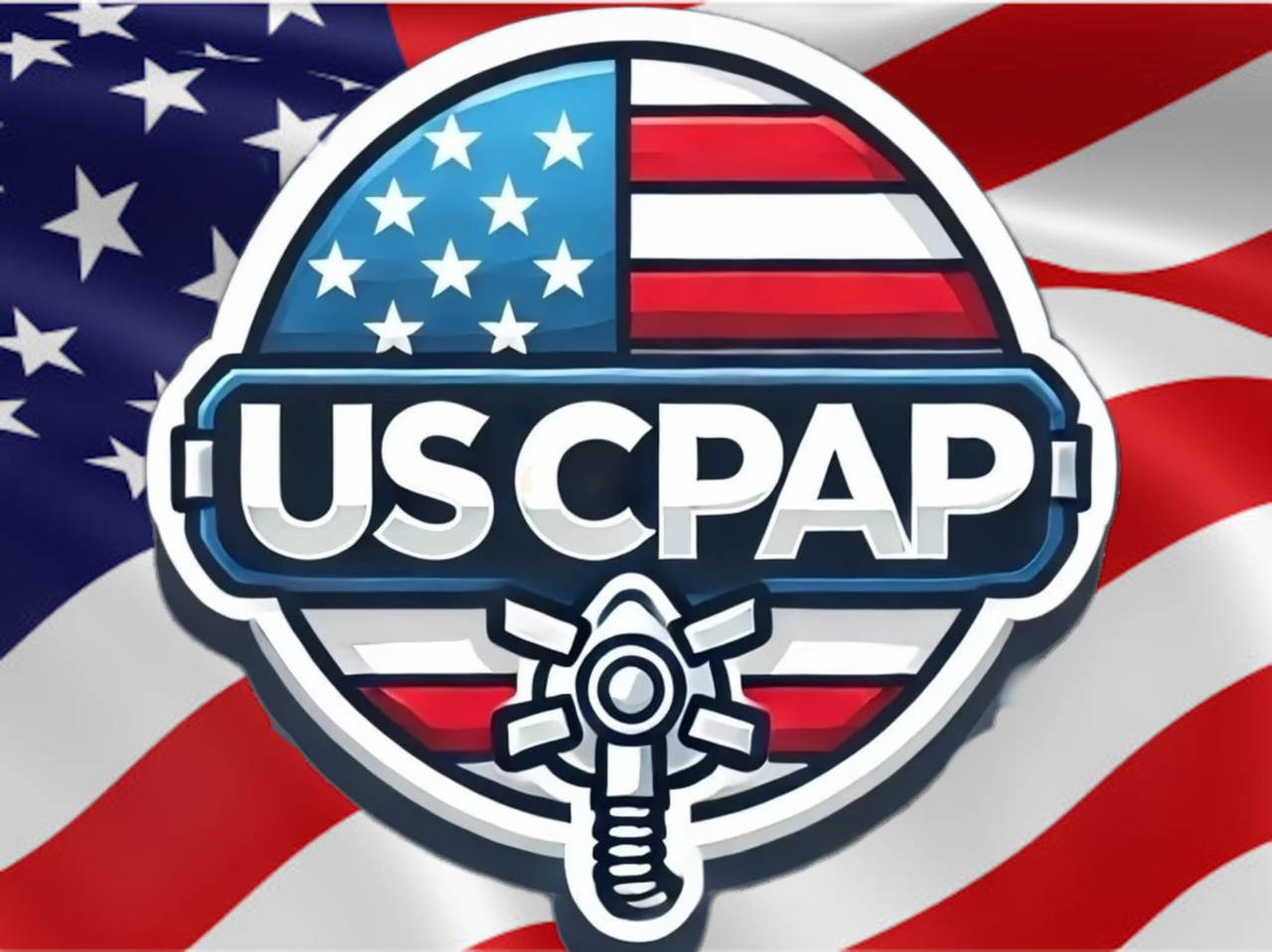
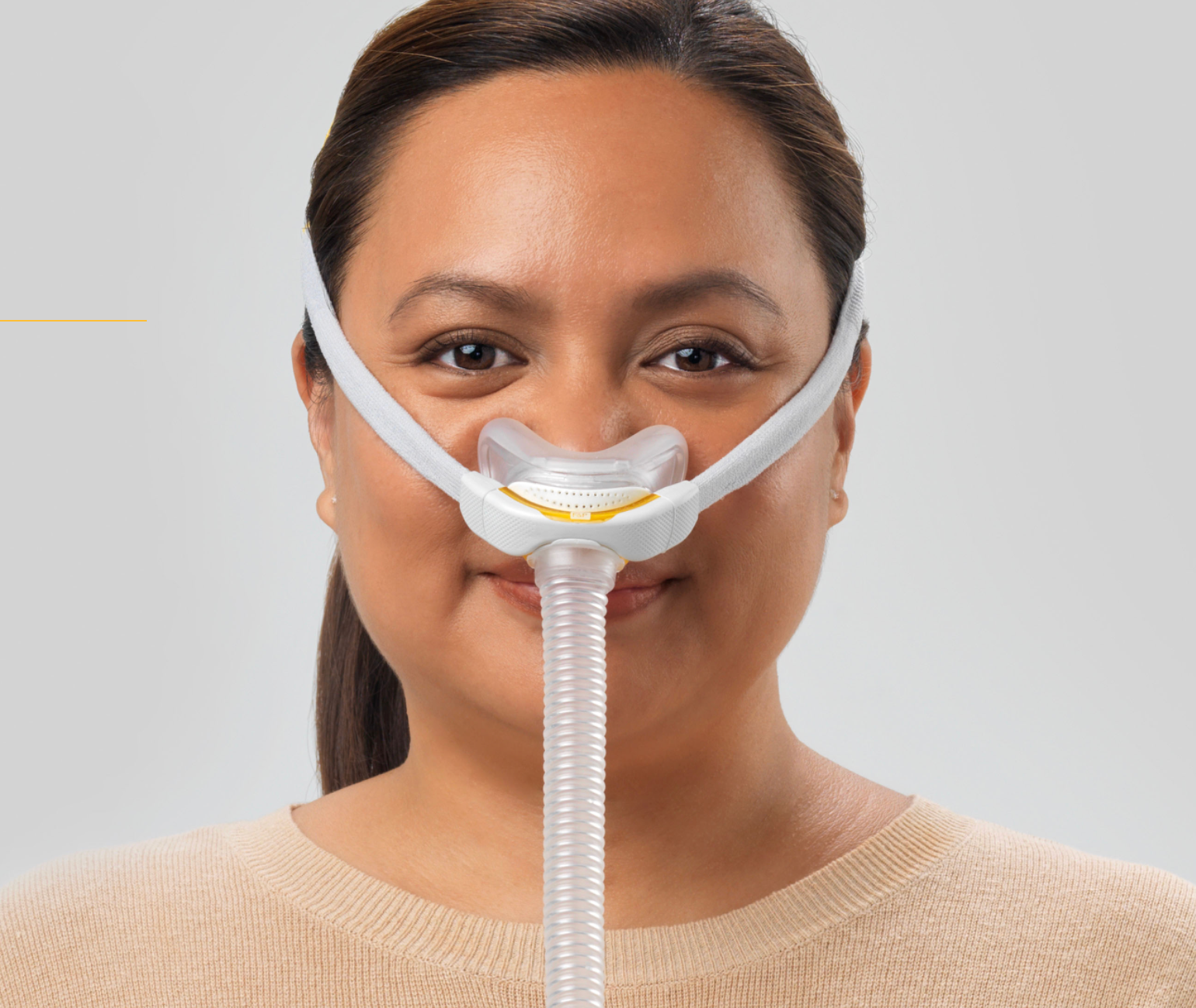
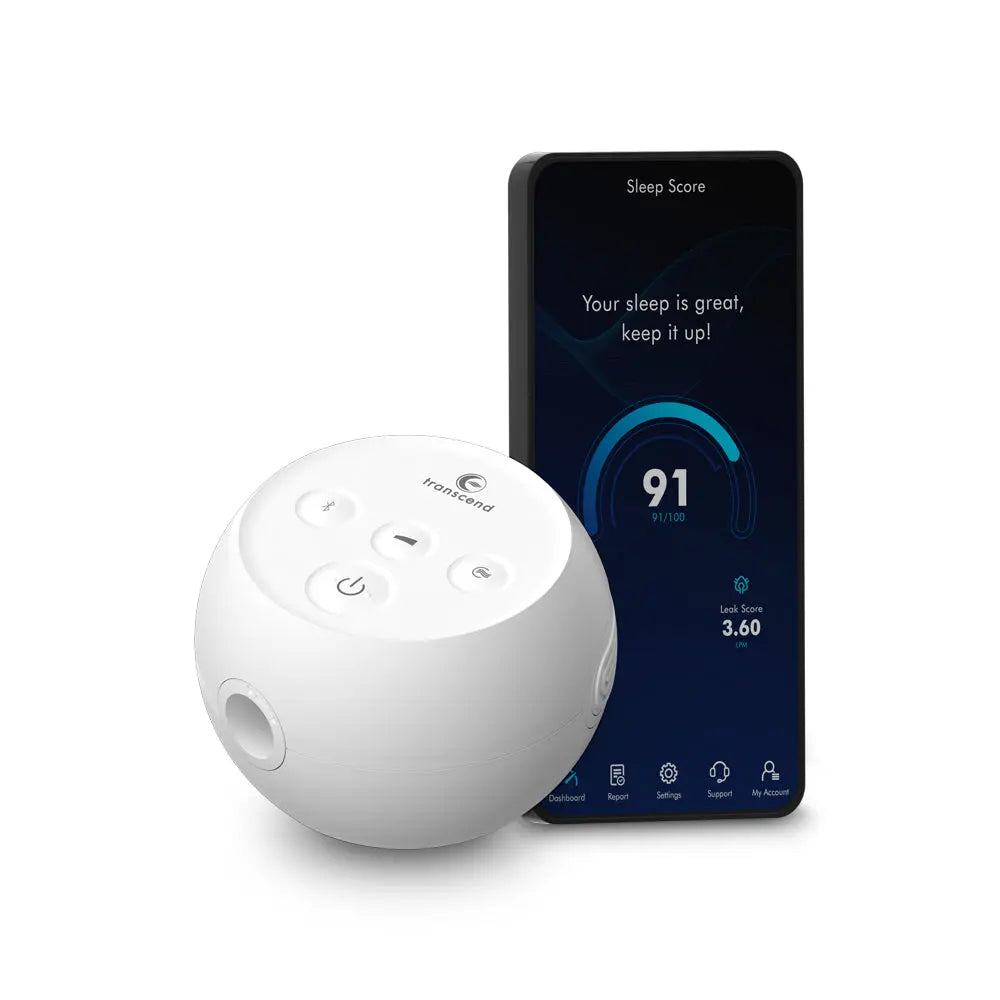
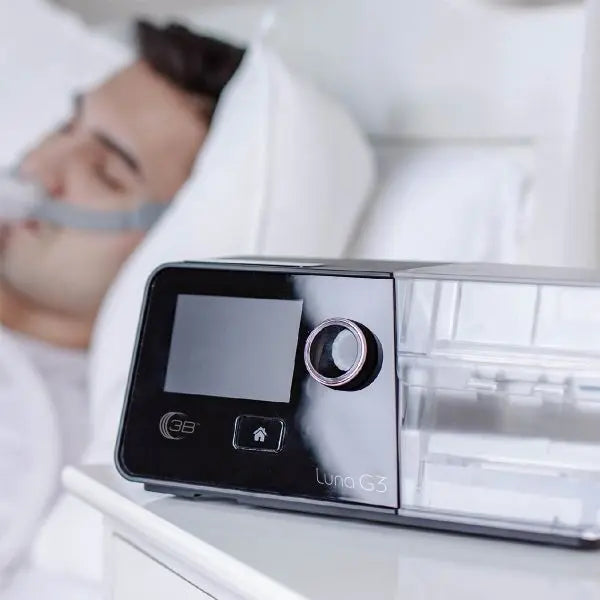


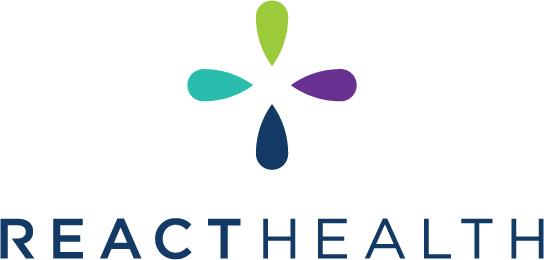
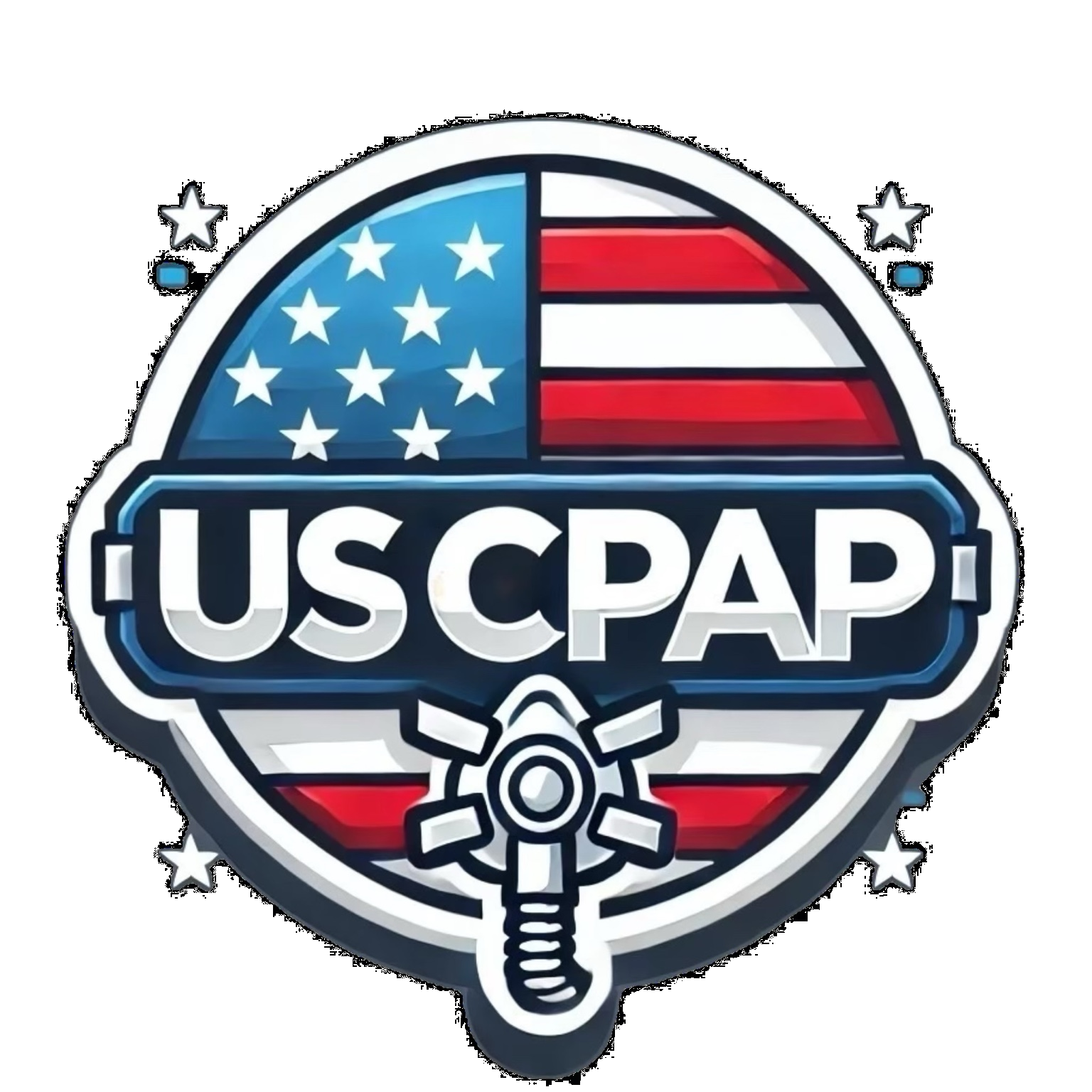
Leave a comment
This site is protected by hCaptcha and the hCaptcha Privacy Policy and Terms of Service apply.